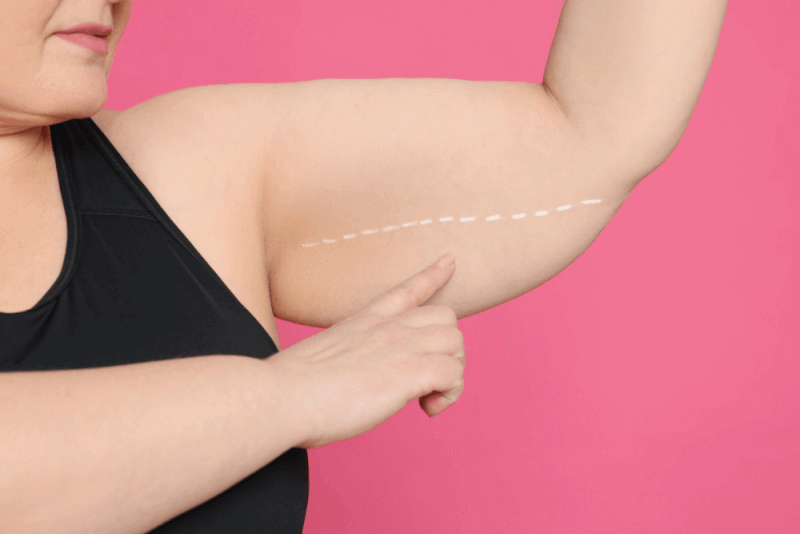What Causes Arm Sagging?
The skin of the arm is prone to sagging due to its structure. Aging slows down collagen production and reduces the amount of collagen in the skin. This is why arm skin sagging is a common issue. Additionally, weight fluctuations can cause the skin of the upper arm to sag because, even though weight is lost, collagen tissue may not return to its original state. Especially in women, arm sagging is frequently observed after childbirth and gastric reduction surgeries. Lastly, the presence of genetically low elasticity also causes the upper arm skin to sag.
Mini Arm Lift
One of the aesthetic surgical options applied for upper arm skin sagging is mini arm lift surgery. This method is less invasive compared to arm lift surgeries. Initially, excess skin and fat tissue are marked. Then, local anesthesia is applied to the area to ensure no sensation is felt during the procedure.
Depending on the amount of skin tissue to be removed, an incision is made along the arm or from the armpit. Subsequently, tissues are tightened through this incision, giving the arm a smoother appearance.
In the final stage, the skin is re-covered, and stitches are applied. The total duration of the procedure varies between 1-2 hours. To reduce the swelling caused by the operation and to support the new arm shape, patients need to wear compression stockings for a while. Additionally, arm movements should be limited for a few weeks following the operation.
Mini arm lift operations are performed to eliminate skin sagging in the lower part of the upper arm. Arm lift operations are carried out to remove excess skin between the armpit and the elbow.
Arm Lift Surgery
Arm lift surgeries, also known as brachioplasty, are cosmetic surgical procedures aimed at eliminating sagging in the upper arm to give it a more aesthetic appearance. The goals of arm lift surgeries include:
- Reducing fat pockets
- Removing excess skin
- Tightening support tissues
Smoothing the remaining skin
How is Arm Lift Surgery Performed?
The stages of arm lift surgery are as follows:
- General anesthesia may be applied in arm lift surgeries. In some cases, local anesthesia is sufficient.
- A long incision is made on the inner or back part of the arm. The size of the incision varies depending on the extent of the surgery.
- Excess fat is then removed using liposuction.
- Stitches are applied to tighten the supportive tissue.
- Excess skin is removed.
- The incision site is closed with stitches and covered with gauze.
Complications of Arm Lift Surgery
The complications that can be seen in arm lift surgery include:
- Abnormal or highly noticeable scarring
- Excessive bleeding
- Fluid accumulation
- Nerve, blood vessel, or muscle damage
- Numbness
- Infection at the surgical site
- Wound separation
Pre-Operative Care for Arm Lift Surgery
The general requirements for patients before arm lift surgery include:
- Quitting smoking
- Discontinuing the use of aspirin, anti-inflammatory drugs, and herbal supplements as they can increase bleeding
- Adjusting the doses of certain medications
- Avoiding bathing for 2 days after surgery







